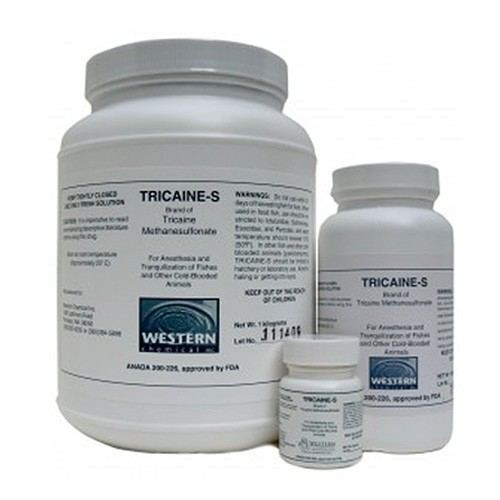CAS Number 886-86-2 ECHA InfoCard 100.011.779 Molar mass 261.296 g/mol Pubchem 13454 Formula C10H15NO5S | PubChem CID 13454 3D model (Jmol) Interactive image ATCvet code QN01AX93 (WHO) ChemSpider ID 12878 Melting point 149.5 °C (301.1 °F) | |
 | ||
Synonyms Metacaine; Tricaine; MS-222; Finquel; TMS | ||
Tricaine mesylate (Tricaine methanesulfonate, TMS, MS-222), is white powder used for anesthesia, sedation, or euthanasia of fish. TMS is the only anesthetic licensed in the United States for fin fish that are intended for human consumption. The drug can have selective toxicity for poikilotherms due to their lower rate of metabolism in the liver.
TMS is a muscle relaxant that operates by preventing action potentials.By blocking action potentials, no signals can be exchanged between the brain and the extremities. There will be no sensory input or muscle contractions which would have been caused by action potential, which includes most muscles.
The optimum concentration may vary with the size and species of the fish, and other variables.
It is easily soluble in water (both fresh and salt) but it drastically decreases the pH of water, increasing the acidity, which may be toxic for fish. Sodium bicarbonate can be used to buffer the solution to a pH range of 6.5-7.5. Usually an equal amount of buffer is added to attain a neutral pH. In salt/marine/sea water, the buffer use may not be necessary because sea water itself has buffering capacity.
The solution of TMS needs to be prepared freshly each time because TMS is light-sensitive and might form toxic by-products upon exposure to light.
